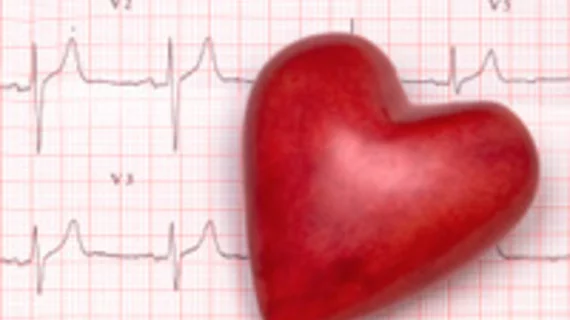Compared to drug therapy alone, catheter ablation nearly halved the risk of death and improved a range of clinical outcomes for patients with both heart failure and atrial fibrillation (AFib) in a meta-analysis.
Published in the Annals of Internal Medicine, the study included results from six randomized controlled trials involving 775 patients, although almost half of them came from the CASTLE-AF trial. The mean left ventricular ejection fraction (LVEF) of the pooled cohort was 28.3 percent at baseline, and follow-up periods ranged from six months to five years.
Overall, 17.6 percent of patients treated with rate- or rhythm-control drugs for the trials died during follow-up, compared to 9 percent who were treated with radiofrequency catheter ablation.
Other clinical outcomes were also better in the ablation group, including:
- Fewer hospitalizations for heart failure (16.4 percent versus 27.4 percent)
- An additional 6.95 percent improvement in LVEF
- A statistically significant increase in peak oxygen consumption
- An additional 20.93-meter improvement in the six-minute walk test
- A 66 percent reduction in recurrent AFib
“The favorable outcomes reported with catheter ablation probably were driven mostly by a reduction in AFib burden and an improvement in LVEF,” wrote lead author Mohit K. Turagam, MD, with Mount Sinai Hospital in New York, and colleagues. “Improved LVEF was observed with catheter ablation in all 6 trials, with a mean increase of [7 percent].
“To appreciate how substantial this improvement is, note that treatment with angiotensin-converting enzyme inhibitors, which also has a mortality benefit, results in a [ 5 percent] LVEF improvement in patients with HFrEF (heart failure with reduced ejection fraction).”
Adverse events were experienced by 7.2 percent of patients in the ablation group versus just 3.8 percent of those receiving standard drug therapy. But Turagam et al. said this difference wasn’t statistically significant and was driven mainly by an early trial in which 30 percent of patients in the ablation group (six of 20) experienced complications.
“Despite these complications with AF ablation, the long-term benefits in all-cause mortality, HF hospitalizations, and overall clinical outcomes must be weighed in clinical decision making,” they wrote.
Limitations of the meta-analysis included one large trial playing a disproportionate role in the results, varying follow-up periods and a relatively young patient pool (55 to 64 years old), which hinders the ability to generalize the findings to older people with heart failure. Also, patients and physicians were unblinded to treatment assignments, which could have affected post-randomization care and the frequency of follow-up visits.
The authors noted four more randomized trials of catheter ablation in heart failure populations are underway and may shed additional light on the effectiveness of this approach for these challenging patients. Current European guidelines give a weak, class IIb recommendation for using AFib ablation to treat patients with HFrEF, despite recent evidence that the therapy can improve clinical outcomes.

